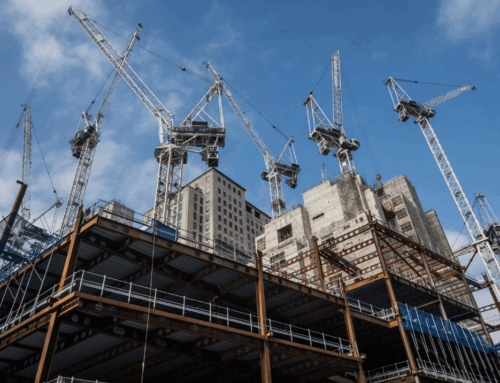Originally published on Agglomerations, the Substack newsletter from the Economic Innovation Group.
By Connor O’Brien
After decades of decline, American dynamism is making a comeback.
U.S. economic dynamism has increased in every single state from pre-pandemic levels, partly reversing a long slide that had persisted since at least the 1990s, according to the latest release of the Index of State Dynamism (ISD).
Dynamism represents an economy’s capacity for agility and reinvention. Dynamic economies attract and deploy talent, incubate new businesses, and produce new ideas that disrupt static incumbents. Sclerotic economies, in contrast, are dominated by older, incumbent firms and are less able to turn new ideas into tangible progress.
The surge in economic dynamism post-pandemic has erased more than half of the enormous decline in the ISD experienced during the Great Recession of 2008–09. Yet even with this historic reversal, the average state’s Index of State Dynamism score is 11 percent lower than in the early 1990s.
Entrepreneurs are Leading the Way
A historic surge in new businesses is fueling dynamism’s national revival. According to the Business Formation Statistics, new business applications are up 40 percent from pre-pandemic averages.[1]
And in 2022, the core startup rate reached its highest levels since 2007.
But the recent surge in dynamism goes well beyond new business formation. The job reallocation rate, a measure of how often workers switch jobs, was 32 percent in 2022, nine percentage points higher than in 2019. Housing permits, growth in total firms, and the share of workers at young firms were also higher.
A National Trend, But Not an Even One
Although the rebound in dynamism has reached every part of the country, it has not been spread evenly.
Two hubs for business formation — Wyoming and Delaware — were among the top three most-improved states on the ISD from 2019 to 2022. Between them, Washington D.C. ranked second in improvement in the ISD since 2019, climbing to fifth in the overall rankings. Beyond these states, the Sun Belt had some of the largest increases in the ISD from 2019 to 2022. Nevada, Florida, and Arizona ranked in the top ten most improved states, while California ranked 12th.
Longtime Leaders Remain on Top
Nevertheless, the pandemic era did not fundamentally reshape which states’ economies are most dynamic versus those that are the least. Utah remains at the top of the ISD rankings, a spot it has held since 2016, thanks to a thriving startup ecosystem and high rates of job switching.
Idaho and Nevada, each of which has high rates of new business formation and in-migration, are also in the top five. And despite a housing crisis fueling one of the nation’s worst out-migration rates, California is third in the latest ISD rankings thanks to a robust startup rate and an inventor rate that is three times the national average.
Big Movers in the Rankings
A few states have, however, moved significantly since the last release of the Index of State Dynamism:
- New York climbed 14 spots, from 39th to 25th, between 2021 and 2022. Last year we wrote about the decline of the Empire State, which had plummeted 23 places in the ISD since 2011. New York’s growth in total firms was among the nation’s worst in 2021, at -3 percent. In 2022, it was the eighth-highest, with 3.2 percent growth.
- A similar comeback story occurred in nearby Rhode Island, which climbed from 44th in the ISD to 29th between 2021 and 2022. As in New York, Rhode Island’s firm growth rate reversed dramatically, rebounding from 45th to fourth nationally.
- Alaska fell 16 spots in the ISD, to 45th. The state experienced a decline in housing production and firm growth, while continuing to have one of the country’s lowest rates of invention and highest rates of out-migration.
Will the Good Times Last?
The post-pandemic era has produced the largest increase in American economic dynamism in at least 30 years, a welcome reversal after years of decline and sclerosis. Whether it lasts will come down to policy choices. The historic jumps in new startups, job switching, and labor force participation, for example, are hardly guaranteed to last. Will lawmakers harness this recent momentum, or squander it?
To further explore the Index of State Dynamism and dive into how your state performs, check out the tool on our website.






